Blog
APRIL 14th Current Affairs
- April 14, 2021
- Posted by: admin
- Category: Culture Current Affairs Daily News Defense & Security Disaster Management Economy Education Environment & Ecology Ethics Geography Governance Health History International Relation Persons in News Polity Science & Technology Social Issues Sports Uncategorized UPSC Notification Videos
- Raisina Dialogue-2021
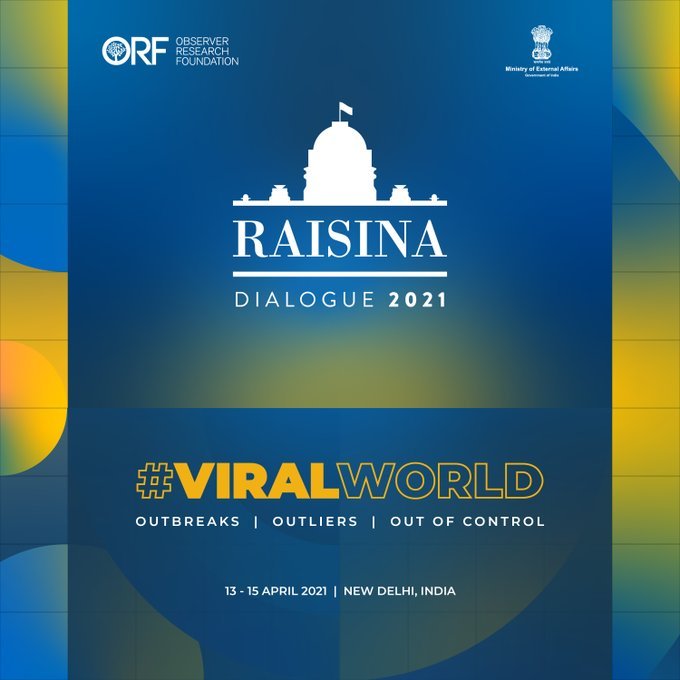
IN NEWS:
- The 6th Edition of the prestigious Raisina Dialogue, jointly organised by the Ministry of External Affairs and the Observer Research Foundation,will be held virtually from 13-16 April, 2021.
- The theme for the 2021 Edition is “#ViralWorld: Outbreaks, Outliers and Out of Control”.
- Prime Minister Narendra Modi addressed the dialogue virtually.
KEY TAKEAWAYS:
Raisina Dialogue
- It is a multilateral conference committed to addressing the most challenging issues facing the global community.
- Every year, global leaders in policy, business, media and civil society are hosted in New Delhi to discuss cooperation on a wide range of pertinent international policy matters.
- The Dialogue is structured as a multi-stakeholder, cross-sectoral discussion, involving heads of state, cabinet ministers and local government officials, as well as major private sector executives, members of the media and academics.
Observer Research Foundation
- It is an independent think tank based in New Delhi with three centres in Mumbai, Chennai and Kolkata.
- It seeks to lead and aid policy thinking towards building a strong and prosperous India in a fair and equitable world and helps discover and inform India’s choices. It carries Indian voices and ideas to forums shaping global debates.
- It provides non-partisan, independent, well-researched analyses and inputs to diverse decision-makers in governments, business communities, and academia and civil society around the world.
Objectives of Raisina Dialogue
- To explore future opportunities for Asian integration.
- To explore advancement in integration of Asia with the world
- It also asserts the crucial role played by India in the Indian Ocean Region.
- It also focuses on how India can build a stable, regional and world order.
- It addresses the most challenging issued faced by the global community.
Raisina Hills
- Raisina Hill is an area in New Delhi that houses the most important buildings of India namely Rashtrapati Bhavan and the secretariat building that houses Prime Minister Office and several other ministers.
- The Raisina Hill is surrounded by other important buildings including Rajpath, Parliament of India and India Gate.
- Earlier, the Viceroy’s House was constructed acquiring land from three hundred families in the local villages.
- This was done under the 1894 Land Acquisition Act. After independence, it was turned into the permanent residence of President of India.
SOURCE:PIB
2.Narrow-Line Seyfert 1 (NLS1) galaxy
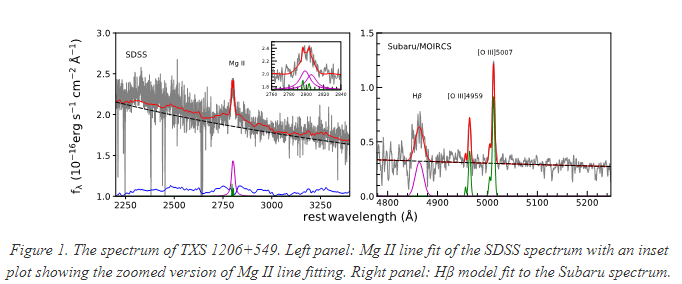
IN NEWS:
- Astronomers have discovered a new active galaxy identified as the farthest gamma-ray emitting galaxy that has so far been stumbled upon.
- This active galaxy called the Narrow-Line Seyfert 1 (NLS1) galaxy, which is about 31 billion light-years away, opens up avenues to explore more such gamma-ray emitting galaxies that wait to meet us.
KEY POINTS:
- The galaxy was discovered when scientists tried to trace red shifted galaxies. The redshifted galaxies are those galaxies that emit longer wavelength. As the wavelength of light gets longer the light turns redder. This is termed as “redshifted” in astronomy.
- The discovery was made when scientists were studying about 25,000 luminous Active Galactic Nuclei.
- The Sloan Digital Sky Survey was used during the study that discovered the galaxy.
- The researchers used Subaru Telescope located in Hawaii, USA to conduct their study.
How is the newly discovered NLS1 different from the other NLS1?
- The discovery of NLS1 has challenged the idea of how relativistic jets are formed. Relativistic Jets are ionised matter that travel at speed of light. They are associated with Quasars, pulsars, neutron stars.
- They are produced by Active Galactic Nuclei. These nuclei are powered by large black holes in giant elliptical galaxies.
- However, NLS1 discovered recently is a unique Active Galactic Nuclei that is powered by a black hole of low mass.
- The NLS1s discovered so far that emitted gamma rays were at lower redshifts. This is the first gamma emitting NLS1 discovered to be at higher redshift.
- The newly discovered gamma ray emitting NLS1 is 13.8 billion years old. It was formed when the universe was 4.7 billion years old.
Way forward
The discovery has opened up a new study to find gamma ray emitting NLS1 galaxies.
SOURCE:PIB
3.INFANT TODDLER AND CAREGIVER-FRIENDLY NEIGHBOURHOODS (ITCN) TRAINING AND CAPACITY BUILDING PROGRAMME.
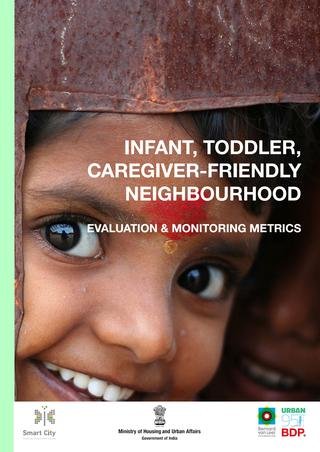
IN NEWS:
- The ‘Infant Toddler and Caregiver-friendly Neighbourhoods (ITCN) Training and Capacity Building Programme’ was launched virtually today by National Institute of Urban Affairs (NIUA) in partnership with Bernard van Leer Foundation (BvLF).
Important Information:
- The Programme is designed to help build capacities of city officials and young professionals for developing young children and family-friendly neighbourhoods within cities in India.
- The programme is a continuation of the long-term partnership between NIUA and BvLF to scale up the efforts and embed the lessons of ITC needs at neighbourhood level within the city level programmes.
- Under the programme, city officials and young professionals are proposed to be skilled through certified training and capacity building modules.
- The training is proposed to be delivered through well-structured training modules, provided online through National Urban Learning Platform (NULP), the platform developed for knowledge dissemination by MoHUA and NIUA.
- The programme is envisioned with the twin objectives:
- first, embedding the learnings from the inventory of knowledge developed by NIUA and BvLF within the on-going and proposed urban development initiatives at neighbourhood and city level; and
- second, handholding participants to embed learnings into the various initiatives of the cities which take into account the everyday needs of young children and caregivers.
About NIUA
- Established in 1976, the National Institute of Urban Affairs (NIUA, is a premier Institute of Ministry of Housing and Urban Affairs, Government of India for research and capacity building for the urban sector in India.
- The Institution has been actively working on bringing forth key areas of concern for urban India to build the urban discourse at various urban scales and committed towards aligning its efforts towards achieving Sustainable Development Goals (SDGs) through all its initiatives and programs.
- It has utilized its competencies in research, knowledge management, policy advocacy and capacity building to address urban challenges and continuously striving to develop sustainable, inclusive, and productive urban ecosystems in the country.
- It has emerged as a thought leader and knowledge hub for urban development in India and is sought out by both Indian and International organizations for collaborations and partnerships in India’s urban transforming journey.
About NULP
- The National Urban Learning Platform (NULP) is envisioned as a means of digitally consolidating key skills and knowledge required by urban stakeholders and making these available to all actors on a channel of their choice.
- The NULP will include tools to enable and streamline content creation, content organisation and management, course building, course management, assessment and certification.
SOURCE:PIB
4. Last two rhinos translocated under IRV 2020
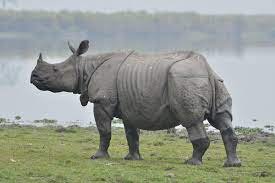
IN NEWS:
The ambitious Indian Rhino Vision 2020 (IRV 2020) came to a close on Tuesday morning with the release of two rhinos — an adult male and a female — in Assam’s Manas National Park transported from Pobitora Wildlife Sanctuary about 185 km east.
KEY INFORMATION:
- Designed in 2005, the IRV2020 is believed to have achieved its target of attaining a population of 3,000 rhinos in Assam.
- But the plan to spread the Rhinoceros unicornis across four protected areas beyond Kaziranga National Park, Orang National Park and Pobitoracould not materialise.
- “The eighth round of rhino translocation under IRV2020 ended at 7 a.m. today [April 13] with the release of the two rhinos in the central part of the Bansbari range of Manas, which has received a total of 22 rhinos from other protected areas under the translocation programme,”
- Assam had at least five rhinobearing areas till the 1980s.
- Better conservation effortshelped maintain the population of the one-horned herbivore in Kaziranga, Orang and Pobitora, but encroachment and poaching wiped the animal out of Manas and Laokhowa Wildlife Sanctuary.
- The lesser-known Laokhowa slipped under the radar of international watchdogs. Manas, in focus for the near-extinction of the pygmyhog, lost the World Heritage Site tag it received in 1985 along with Kaziranga from the UNESCO.
- “The translocated rhinos helped Manas National Park get back its World Heritage Site status in 2011.
- It can be expected that the translocation programme will set up a healthy, breeding population for the future of the species.
About the Indian Rhino Vision 2020 (IRV 2020):
- Launched in 2005.
- IRV 2020 is an initiative led by the Forest Department, Government of Assam, in partnership with WWF India, International Rhino Foundation, and several other organizations.
- The goal of IRV2020 was to increase the rhino population in Assam to 3,000 by establishing populations in new areas.
- Rhinos are now found in four Protected Areas in Assam: Pabitora Wildlife Reserve, Rajiv Gandhi Orang National Park, Kaziranga National Park, and Manas National Park.
About One- horned rhinos:
- Only the Great One-Horned Rhino is found in India.
- Also known as Indian rhino, it is the largest of the rhino species.
- It is identified by a single black horn and a grey-brown hide with skin folds.
- They primarily graze, with a diet consisting almost entirely of grasses as well as leaves, branches of shrubs and trees, fruit, and aquatic plants.
Protection Status:
IUCN Red List: Vulnerable.
Convention on International Trade in Endangered Species of Wild Fauna and Flora (CITES): Appendix I (Threatened with extinction and CITES prohibits international trade in specimens of these species except when the purpose of the import is not commercial, for instance for scientific research).
Wildlife Protection Act, 1972: Schedule I.
SOURCE:TH
5. Poshan Gyan
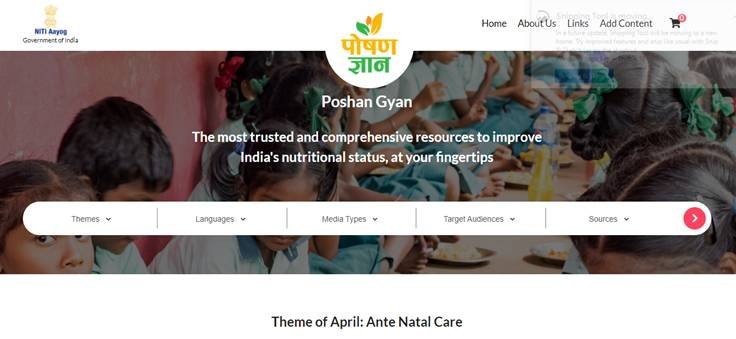
IN NEWS:
NITI Aayog, in partnership with Bill and Melinda Gates Foundation and Centre for Social and Behaviour Change, Ashoka University, today launched Poshan Gyan, a national digital repository on health and nutrition.
KEY POINTS:
- Poshan Gyan is a trusted and comprehensive online resource for anybody working in the nutrition sector in India.
- It is a collection of effective communication materials created by government agencies and other development organizations to tackle the challenges of knowledge awareness and behaviour change in the nutrition sector.
- The materials cover a range of topics, such as antenatal care, complementary feeding, adolescent health, diet diversity, anemia prevention etc.
- This repository is curated and maintained by NITI Aayog in joint efforts with other development partners.
- Poshan Gyan is designed to be accessible for everybody to use – whether frontline health workers, community leaders, teachers or anyone else seeking to improve nutritional outcomes.
- It contains materials targeted towards different audiences using a variety of media types, such as interpersonal communication, mass media, outdoor advertising etc.
- The ‘search’ toolbar on the homepage will help you find the most relevant materials for your purpose in a simple and easy manner.
SOURCE:PIB
